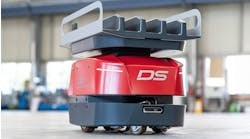The median total compensation package was $9,656,000, according to Mercer. Of that approximately two-thirds of the value came from long-term incentive grants.
Pay in the form of long-term incentives climbed to a median $6,457,000, a median year-over-year change of 4%.
A close look at the pay structure revealed that utilization of time-vesting restricted stock was relatively steady over the past three years (22% of the sample companies granted them in 2013). However performance shares, used by 41% of S&P 500 companies in 2011, became a majority practice in 2013 used by 51% of companies surveyed.
Among S&P 100 companies, the 50% threshold was crossed in 2012, and usage increased to 56% in 2013. The prevalence of stock options continued to fall in 2013 with just 25% of S&P 500 CEOs receiving option grants (down 10 percentage points since 2011).
The substitution of full-value performance awards for time-vesting option grants is a long-term trend in response to a longstanding criticism that options lack line of sight to actionable goals, according to the research firm. “In practice, performance awards are more closely aligned to explicit financial or operational outcomes than stock options,” said Ted Jarvis, Mercer’s global director of Data, Research and Publications. “However, the performance measures and associated goals must reflect the company’s strategic objectives for performance shares to be meaningful incentives.”
According to David Cross, Partner with Mercer’s Executive Rewards practice, “Companies are facing pressure from external advisory groups to adopt certain policies and practices used among their peers, including metrics and goals. This is a ‘safe’ approach that mitigates risk, but does not necessarily result in programs that best align with shareholder value. Benchmarking isn’t a substitute for well-designed programs that appropriately reflect the business strategy.”
The granting of a single type of long-term vehicle is distinctly a minority practice among companies in the S&P 500, with just 3% of CEOs receiving options only, 3% receiving restricted stock only and 9% receiving performance shares or performance cash only. Approximately one-third of the CEOs were granted a combination of all three, with an average weighting of 28% options, 30% restricted stock and 42% performance awards. Typically, performance awards account for the greatest proportional value when they are granted in combination with another type of long-term vehicle.
The shift from options to performance shares is likely to continue. “Performance shares are seen to have greater impact by management while options are frequently considered reflective of overall market movement and less impacted by management. If that perspective persists, options will continue to decline for some time,” said Cross.
To download the survey results, visit http://www.mercer.com/insights/point/2014/ceo-compensation-mercer-study.html.











